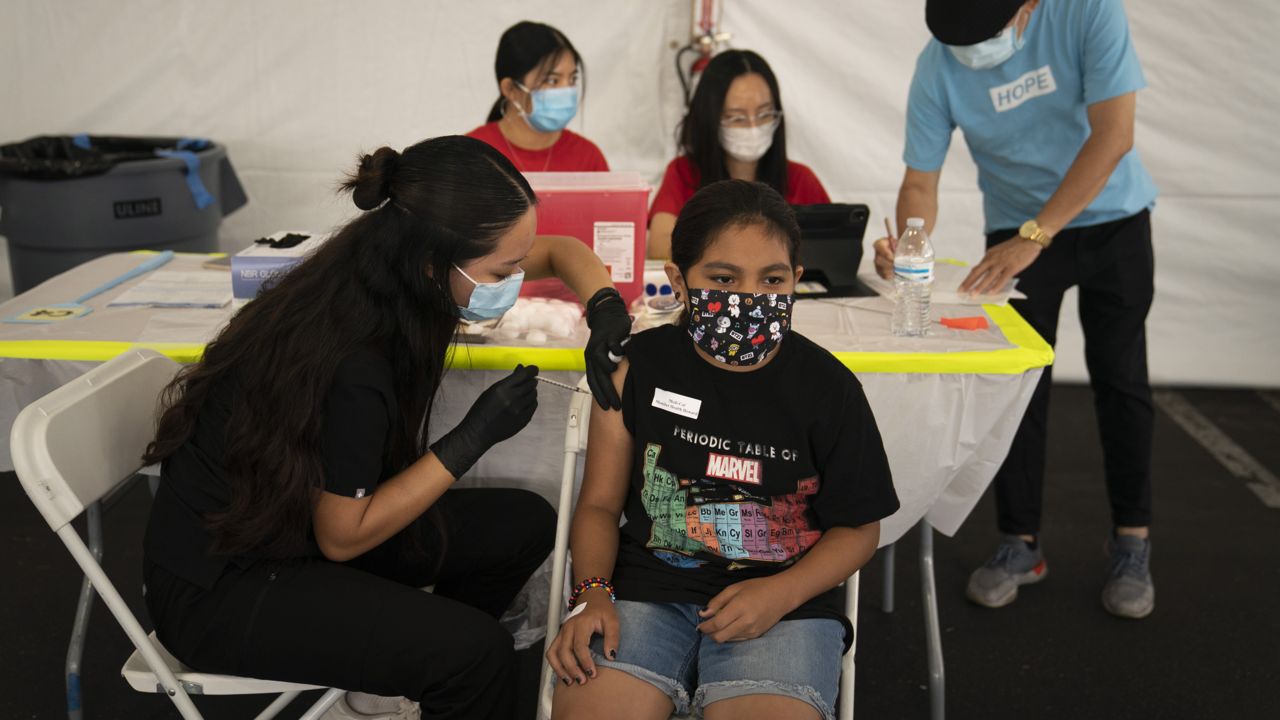SANTA ANA, Calif. (CNS) — Orange County's weekly COVID-19 case and positivity rates showed significant declines Tuesday as hospitalizations also dropped, providing more evidence the county is emerging from the summer surge.
"The numbers are all looking good, so I'd say keep it up Orange County," Andrew Noymer, an epidemiologist and UC Irvine professor of population health and disease prevention, told City News Service. "It's pretty clear that we're going to get through this summer without exceeding last summer's peak."
Noymer added he was "apprehensive about Labor Day unleashing a wave, but don't set your watch two weeks from today. We've seen before that these waves build in weird ways that nobody really understands fully. Yes, I think the worst is coming, but I don't know when."
Orange County CEO Frank Kim told CNS that "our data looks pretty good."
According to weekly numbers released on Tuesdays, the county's average daily case rate per 100,000 residents dropped from 18.6 last week to 16, while the testing positivity rate fell from 6.8% to 5.4%.
The county's Health Equity Quartile rate, which measures the impact of the pandemic on disadvantaged communities, dropped from 7.3% to 5.8%.
The positivity rates overall and in the Health Equity Quartile "have traded back and forth, but we're not seeing significant disparity," Kim said.
"We started to see a consistent decline the third week in August," Kim said of the infection rates.
Testing has also rebounded, he said.
"What's interesting is in July our testing dropped to an all-time low of 162 (per 100,000 residents)," Kim said. "But once the cases started to rise they more than doubled."
Kim also pleaded that "There's been a very good elasticity in our ability to address demand in testing... I'm not having any complaints about lack of access to testing."
The county's testing rate was 357.3 per 100,000 residents, according to the weekly averages.
Kim also said it appears vaccination demand was also on the rise.
"The vaccines have been here since January, we're eight months into it and tens of millions of people are vaccinated and there have been some isolated cases of adverse reactions, but overall it's a safe vaccine," Kim said. "The vaccines are here, they're plentiful and easy to get to and they're working."
Kim added, "the risk we have is we don't take this seriously and leverage the opportunities we have today. If you don't have a higher percentage of people vaccinated we're always prone to another wave."
The county's case rate for fully vaccinated residents as of Aug. 28, the latest figures available, was 5.7 per 100,000, but 32.5 per 100,000 for the unvaccinated.
Orange County's COVID-19 hospitalizations declined from 500 on Friday to 466 on Tuesday, according to the Orange County Health Care Agency, which updates numbers Mondays through Fridays and not on holidays such as Labor Day. The number of intensive care unit patients dropped from 138 on Friday to 128 on Tuesday.
The county had 20% of its ICU beds available and 65% of its ventilators as of Tuesday.
The OCHCA reported 1,651 new infections since Friday, raising the cumulative total to 288,601 cases since the pandemic began.
The county also logged 20 more fatalities since Friday, raising its cumulative total to 5,270. Of those, 14 occurred in August, three were in July, two were in June and one was in January.
That increased the death toll for August to 87. There have been no deaths reported for this month so far.
July's death toll increased to 20, with 17 for June, 23 in May, 45 in April, 199 in March, 615 in February, 1,575 in January — the deadliest month of the pandemic — and 972 in December, the next deadliest.
Of the deaths logged Tuesday, one was a person 24 to 34 years old, one was in the 35-to-44 age range and four were in the 45-to-54 age range.



